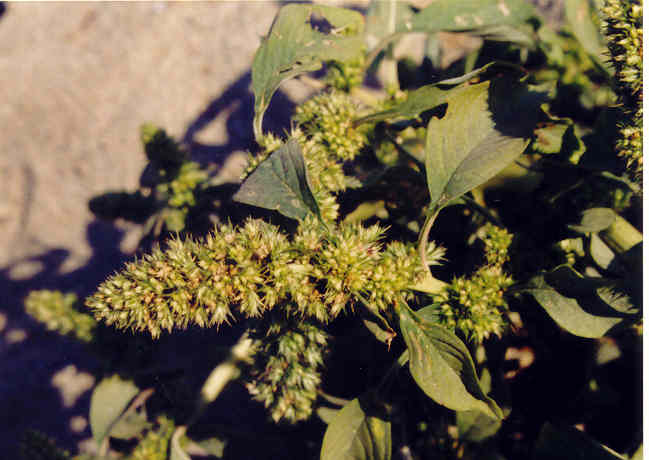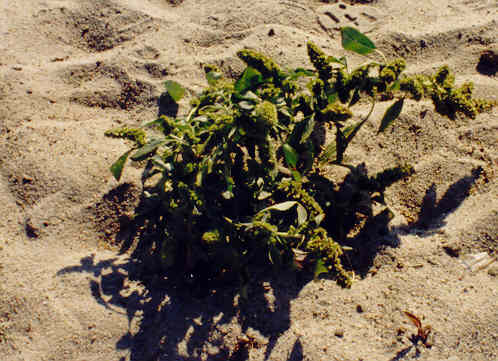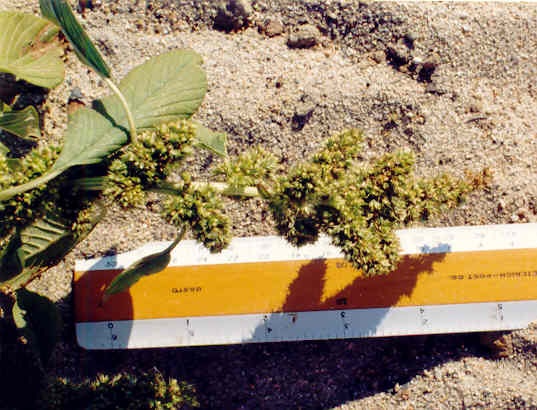
Amaranthus hybridus L.
Amaranthaceae (Amaranth Family)
Eurasia
 |
Amaranthus hybridus L.Amaranthaceae (Amaranth Family)Eurasia
Slender Pigweed |
November Photo
Plant Characteristics:
Erect annual, 3-25 dm. tall, stems often reddish at base, glabrous or
pubescent, monoecious; lvs. alternate, entire, 20-150 mm., dark green, lower
diamond-shaped to ovate, upper +/- widely lanceolate, petiole 10-70 mm.; infl.
many fld., of few to mostly
numerous lateral spikes in panicles, tawny green, the lateral +/- ascending, 2-6
cm. long, 6-12 mm. thick, the terminal usually longer and thicker; bracts 2-3.5
mm., green, margin scarious below middle; staminate fls. with generally 5
sepals, 2-3 mm. long, longest with reflexed spine, stamens 5; pistillate fls.
with 5 sepals, 1.5-2.5 mm., outer sepals 1/3 greater than inner, narrow, spine
tipped, inner short pointed; fr. +/- 1.5 mm., circumscissile, lid strongly
wrinkled at base; style slender, stigmas 3, erect; seed 1.1-1.4 mm. wide,
reddish brown-black.
Habitat:
Disturbed places below 300 meters. Great
Central Valley, Central western CA, southwestern CA, to eastern U.S., TX, Mex.,
South America. Uncommon.
June-November.
Name:
Greek, amarantos, unfading,
because of the dry persistent calyx and bracts. (Munz, Flora
So. Calif. 60). N.L. hybridus,
a mongrel. (Jaeger 121). I do not know the relationship of the species name to the
plant. (my comments). John Johnson
suggests that the author found this species difficult to separate clearly from
related species, being intermediate between them, suggestive of a hybrid.
General:
Rare in the study area with only a few plants found in the Big Canyon
parking lot area.
The Cocopa Indians of southern California and northern Baja California
ate the green leaves of Amaranthus spp. (Campbell 145).
The Seri Indians from Tiburon Island in the Gulf of California collected
seeds from woodrat nests. They not
only pillaged the ratís cache of fruit and seeds but caught the rat as well
and commonly skinned and roasted it. (Campbell
168). For further
information on the genus Amaranthus,
see A. albus, A. blitoides, A.
deflexus, and A. retroflexus.
(my comments).
Text Ref:
Hickman Ed. 62; Munz, Flora So.
Calif. 62.
Photo Ref:
Nov-Dec 97 # 1,2,4.
Identity: by R. De Ruff,
confirmed by John Johnson.
First Found: November 1997.
Computer Ref: Plant Data 506.
Have plant specimen.
Last edit 6/12/05.
 |
 |
November Photo November Photo